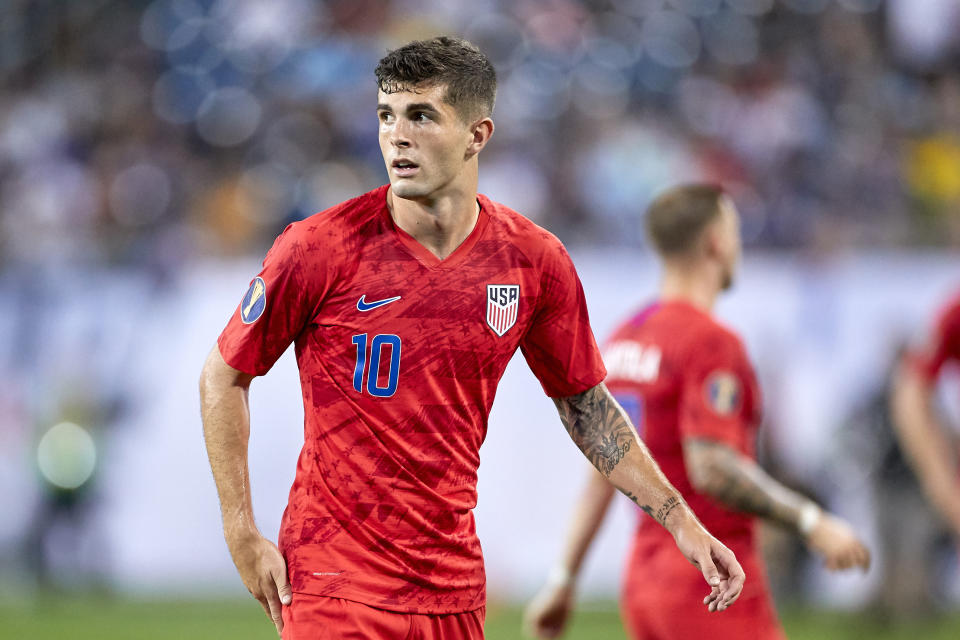The USMNT’s World Cup qualifying schedule appears set, but COVID-19 will have the final say

CONCACAF’s announcement Monday afternoon that it had settled on a new format and schedule for its 2022 World Cup qualifying tournament was welcome news for United States men’s national team fans, many who have been wondering since the global coronavirus pandemic hit almost six months ago when the USMNT might be able to take the field again.
The plan would see the Americans play friendly matches this fall, possibly in Europe, where a pair of exhibitions slated for March were cancelled because of the health crisis. The semifinals of the inaugural Nations League would follow in March 2021, with the U.S. taking on Honduras for a spot in the title game. Qualifying would then kick off in June of next year and run through March of 2022.
Sounds great in theory.
“It’s good to have certainty,” national team coach Gregg Berhalter told U.S. Soccer’s website after the news broke. “The certainty helps us plan, regardless of what the outcome was going to be with the format. We will be prepared now that we know what things look like going forward.”
Do we, though? Can anyone, especially in this part of the world, say with any certainly at all that bringing large groups of people together for international sporting events will actually be feasible just a few short months from now?
If Major League Baseball’s struggle to get its COVID-cursed 2020 season off the ground is any indication, CONCACAF’s plan is exceedingly ambitious, to put it kindly. For while the National Women’s Soccer League and Major League Soccer have set the standard for all other North American sports circuits to follow with their mostly successful restarts inside of strictly regulated bubbles (with the NBA and NHL set to follow suit starting this week), baseball has its teams traveling from city to city to play games in empty stadiums. Just days into its restart, a flurry of games have been postponed after no fewer than 16 members of the Miami Marlins tested positive for the novel coronavirus, setting off a league-wide panic.
MLB’s problems don’t bode well for the NFL, which has followed the federal government’s lead by more or less pretending that the pandemic doesn’t exist. It still intends to play its full season as usual, with fans in attendance where local authorities will allow it. Same goes for many college football programs.
At some point, though, the NFL is destined to get the same wakeup call that baseball received this week, the same depressing reminder that the virus — and the virus alone — will dictate how or when a normal sports calendar can resume. Right now, COVID-19 remains in total control.
Unless or until the United States gets a handle on its avalanche of cases, staging big-time sports outside of a bubble probably isn’t all that practical. International games present even greater challenges. Many countries remain closed. Few are willing to welcome Americans right now.
The Toronto Blue Jays will be based in Buffalo this season after the Canadian government refused to allow it and its U.S.-based opponents to travel freely across the border. Other nations require visitors to quarantine for up to two weeks upon arrival. None of those restrictions figures to disappear soon. So sure, go make some plans, CONCACAF. It’s nice to have a framework based on how things could look like beginning this fall. But that’s all it is: a rough outline projecting a best-case scenario.
The good news is the schedule has some built-in flexibly. The final “Octagonal” round of qualifying isn’t slated to start for almost a year. If necessary, the Nations League, which nobody cared about to begin with, can be scrapped to free up additional fixture dates. The thee teams that will round out the field of eight — the U.S., Mexico Costa Rica, Jamaica and Honduras have already advanced to the final phase — can be determined by the FIFA ranking if having international matches this year proves impossible.
“We don’t want to put any players at risk, but we want to play in the October and November windows,” Berhalter said before seeming to acknowledge that those two aims might well be at odds with each other. “Given what the world has been confronted with the last few months, it goes without saying that the priority is doing it in a safe way.”

 Yahoo Lifestyle
Yahoo Lifestyle 
